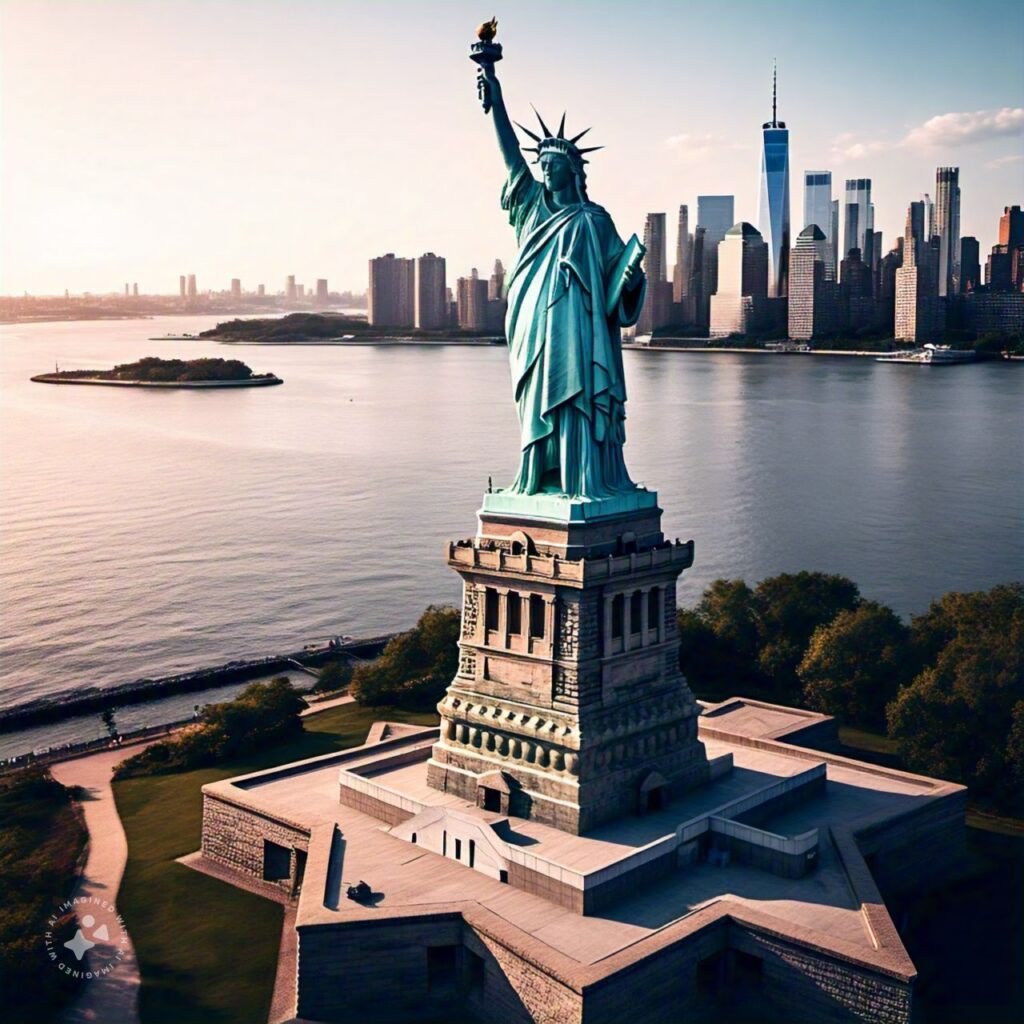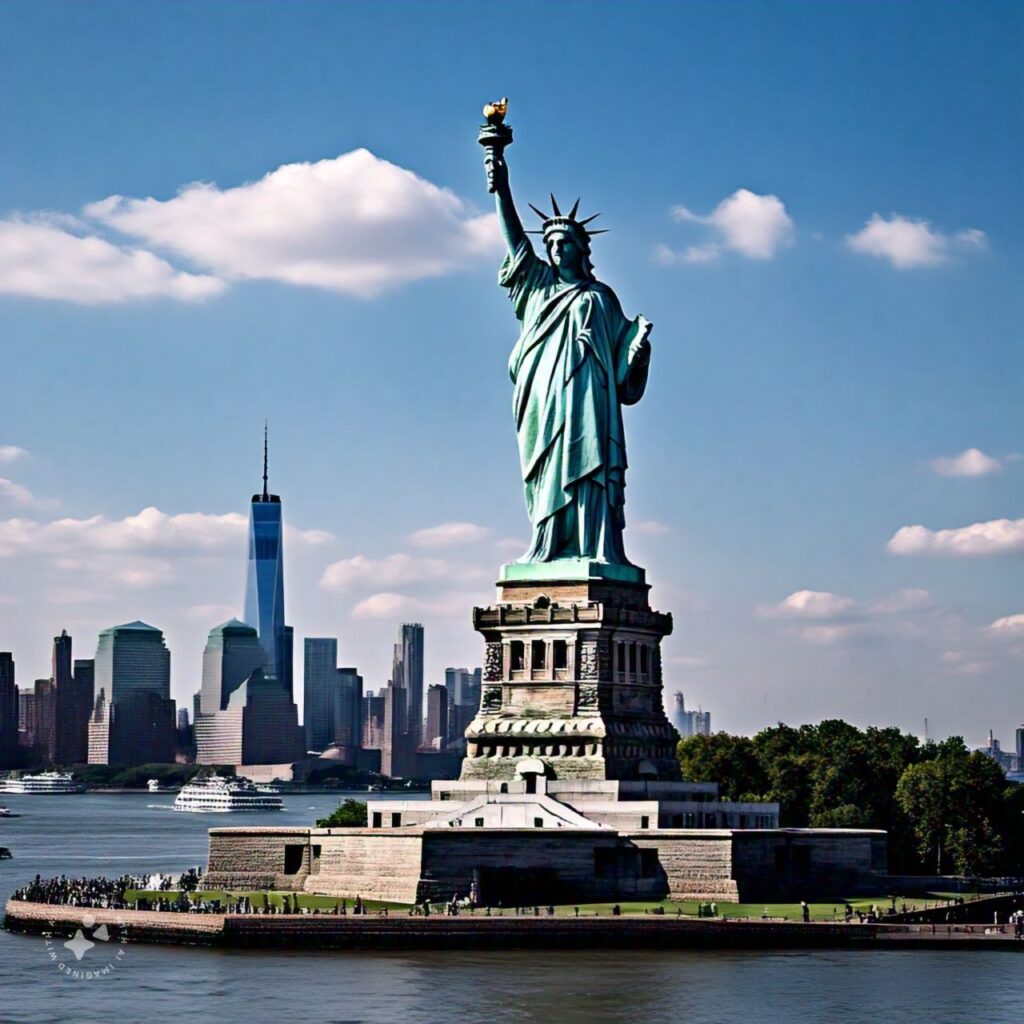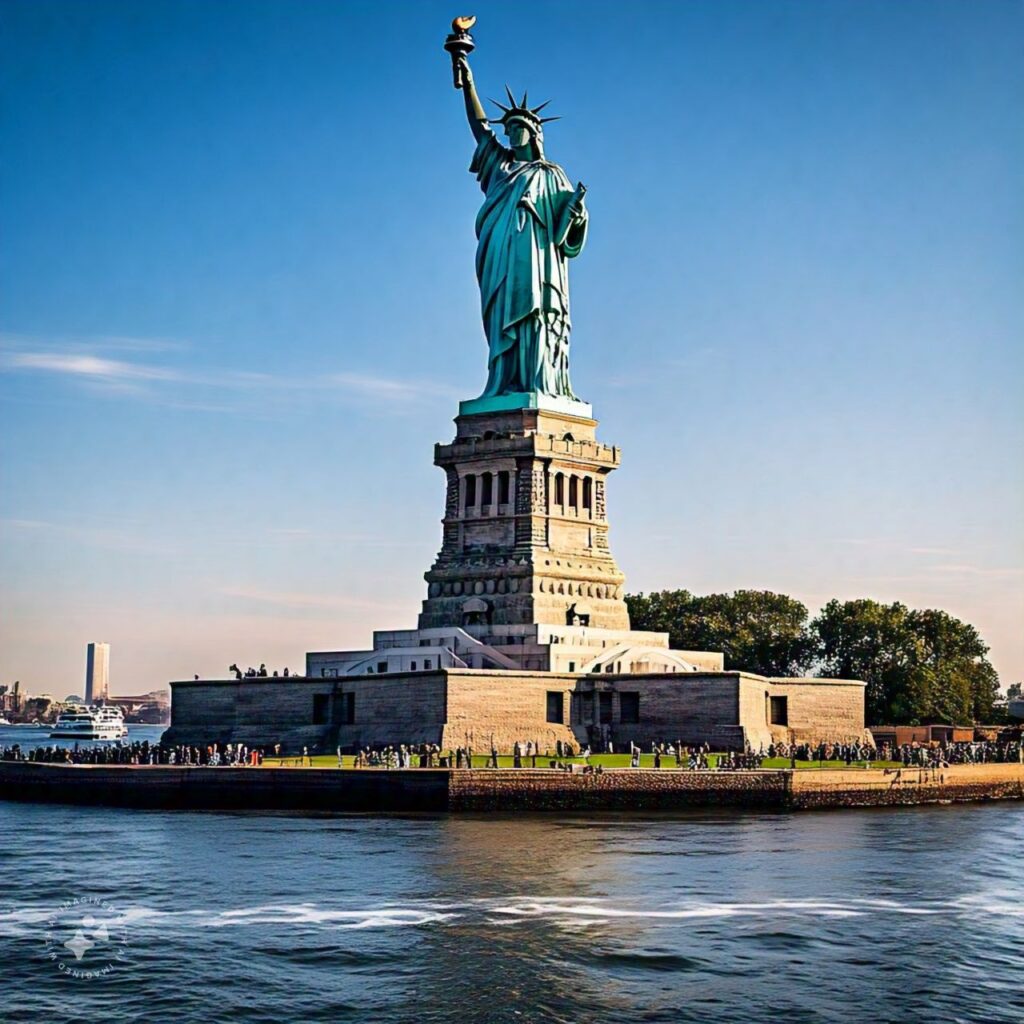The Statue of Liberty, one of the most recognizable symbols of freedom and democracy in the world, stands proudly at the entrance to New York Harbor, welcoming millions of immigrants, tourists, and travelers to the United States. Towering over 305 feet in height, this colossal statue represents the ideals of liberty, opportunity, and hope that the United States is built upon. It is a universal symbol of the values of freedom, justice, and equality, attracting visitors from all corners of the world who come to witness its grandeur and reflect on its profound significance.
In this article, we will delve into the history, design, symbolism, and cultural impact of the Statue of Liberty, exploring why it continues to inspire awe and admiration more than a century after its unveiling.

A Gift from France: The Origins of the Statue
The idea for the Statue of Liberty was conceived in the late 19th century by Édouard René de Laboulaye, a French political thinker, and Frédéric Auguste Bartholdi, a French sculptor. Laboulaye, a strong advocate for the values of liberty and democracy, proposed the idea of gifting a monument to the United States to celebrate its centennial in 1876 and to commemorate the enduring friendship between the two nations, particularly their cooperation during the American Revolutionary War.
Bartholdi, who had previously designed several monumental sculptures, was commissioned to design the statue. He envisioned a powerful figure of liberty holding a torch, symbolizing enlightenment, and standing as a beacon of hope to the world. The statue would embody the ideals of freedom and democracy that had inspired the American Revolution and the founding of the United States.
Construction of the statue began in France in 1875 and took nearly 10 years to complete. The statue was built in sections, with Bartholdi overseeing the design and the work of hundreds of artisans and engineers. The framework for the statue was designed by Gustave Eiffel, the renowned French engineer who later became famous for the Eiffel Tower. The statue was carefully constructed using copper, with a thin layer of metal over a framework of iron and steel.
In 1884, after years of construction, the statue was completed in France. The next challenge was to transport it to the United States. The statue was disassembled into 350 pieces and shipped across the Atlantic Ocean in 214 wooden crates. After arriving in New York Harbor in 1885, the statue was reassembled and erected on Liberty Island (then called Bedloe’s Island). The official dedication ceremony took place on October 28, 1886, with President Grover Cleveland presiding over the event, marking the statue’s official unveiling.
Design and Symbolism of the Statue of Liberty
The Statue of Liberty is a magnificent work of art, rich in symbolism and meaning. The statue stands on a pedestal, holding a torch in her right hand and a tabula ansata (a tablet inscribed with the date of the American Declaration of Independence, July 4, 1776) in her left hand. The statue is depicted as a woman, symbolizing the ancient Roman goddess of liberty, Libertas.
Here are some key elements of the statue and their symbolic meanings:
- The Torch: The statue’s raised right hand holds a golden torch, which symbolizes enlightenment and freedom. The torch has come to represent the guiding light of liberty, offering hope and guidance to those seeking refuge, opportunity, and a better life. The light emitted from the torch is often seen as a beacon of hope for those escaping oppression and tyranny.
- The Crown: The statue wears a crown with seven spikes, representing the seven continents and seven seas, symbolizing the universality of liberty. The crown’s rays also reflect the idea that liberty shines upon all people, regardless of nationality, race, or religion.
- The Tabula Ansata: In her left hand, the Statue of Liberty holds a tablet inscribed with the date of July 4, 1776, when the Declaration of Independence was signed. This is a direct reference to the birth of American independence, marking the day when the United States formally declared itself a free and sovereign nation.
- The Broken Chains: At the feet of the statue, there are broken chains, representing the liberation from tyranny and oppression. This symbolizes the freedom that the United States offers and the end of servitude for those seeking a new life.
- The Robes: The statue is draped in a flowing robe, reminiscent of classical Greek and Roman statues of goddesses. The robes emphasize the statue’s nobility and the ideals of justice and equality.

The Statue’s Role as a Symbol of Immigration
One of the most significant aspects of the Statue of Liberty is its role as a symbol of hope and opportunity for millions of immigrants arriving in the United States during the late 19th and early 20th centuries. The statue’s location at the entrance to New York Harbor made it the first thing immigrants saw when they arrived by ship, and for many, it became a powerful symbol of the new life awaiting them in America.
Between 1892 and 1954, millions of immigrants passed through Ellis Island, the nation’s busiest immigration station, located just a short distance from the Statue of Liberty. For these immigrants, the sight of the statue represented the end of a long journey and the beginning of a new chapter in their lives, where they could pursue the American Dream of freedom, prosperity, and self-determination.
The poem “The New Colossus” by Emma Lazarus, which was added to the pedestal of the statue in 1903, further cemented the statue’s role as a symbol of immigration and refuge. The poem’s famous lines, “Give me your tired, your poor, your huddled masses yearning to breathe free,” echo the welcoming spirit of the United States, inviting immigrants from all over the world to find a safe haven in America.
The Statue of Liberty’s Cultural Impact
Over the years, the Statue of Liberty has become an enduring symbol of the United States and its core values of freedom, democracy, and opportunity. It has appeared in countless works of art, literature, and film, reinforcing its significance as a symbol of the American identity.
The statue also serves as a global icon of liberty and human rights. It has been used by various movements and causes around the world to represent the struggle for freedom, justice, and equality. For example, during the Civil Rights Movement in the United States, the Statue of Liberty was often invoked as a symbol of the fight for racial equality and social justice. Similarly, the statue has been referenced in international movements for human rights, democracy, and the right to self-determination.
As a UNESCO World Heritage Site, the Statue of Liberty remains an important cultural landmark that attracts millions of visitors each year. Its message of hope and freedom resonates not only with Americans but with people from all walks of life and all corners of the globe.

Preservation and Restoration Efforts
As one of the most important national monuments in the United States, the Statue of Liberty has undergone several preservation and restoration projects to ensure its continued longevity. Over time, the statue’s copper exterior has developed a distinctive green patina, due to the natural oxidation of copper. This patina, while adding to the statue’s beauty, also serves as a protective layer that prevents further corrosion.
In the 1980s, a major restoration project was undertaken to repair and preserve the statue. The restoration included the replacement of the torch, which had been damaged over time, and the reinforcement of the statue’s internal structure. The pedestal, which was also showing signs of wear, was restored to ensure the stability of the entire monument.
Today, the statue is carefully maintained by the National Park Service to protect it from the elements and the impact of millions of visitors each year. Efforts to preserve and protect the Statue of Liberty ensure that future generations will continue to experience and be inspired by its message of freedom and hope.
Conclusion: A Beacon of Freedom
The Statue of Liberty is not just a monument; it is a symbol of the American ideal and a beacon of hope for people around the world. From its origins as a gift from France to its role as a welcoming sight for immigrants and a symbol of liberty, justice, and freedom, the statue continues to inspire and captivate people of all cultures and backgrounds.
As a reminder of the values of freedom and democracy, the Statue of Liberty stands as a universal emblem of human rights and the enduring power of hope. In the heart of New York Harbor, it continues to shine brightly, welcoming all who seek liberty and a better life—just as it has done for over a century.
